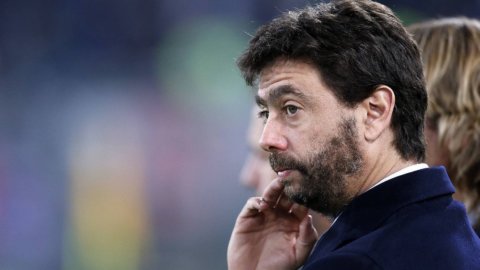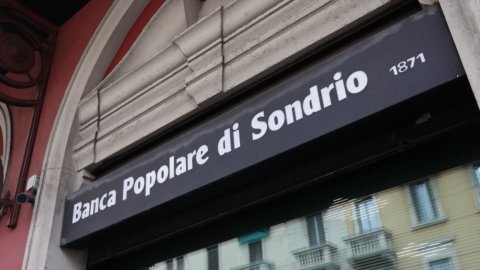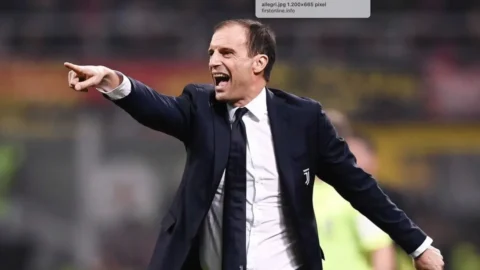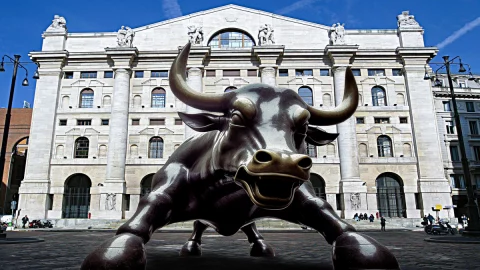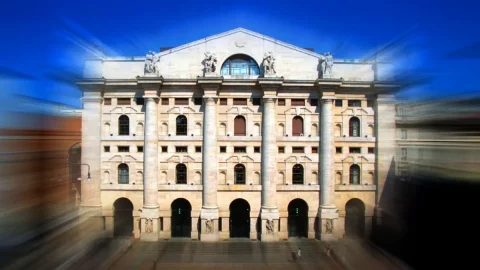From a financial point of view, 2017 was an excellent year for Juve, Roma and Lazio, the three football clubs listed on Piazza Affari. This is confirmed by the performance of the titles of the three clubs from January to today. The bianconeri have even gained 150%. Lazio has practically doubled its capitalization, while Roma has increased its value on the stock market by almost 50%.
In today's football, the stock market performance of a club is closely connected to an infinite number of factors. Obviously, the results obtained in the field, at a national but above all international level, have the greatest impact. Over the years, however, the economic and commercial implications behind a football club have increased. Just think of the million-dollar agreements with the main sponsors and the management of some players who are becoming real strategic assets, in some cases as important from a financial point of view as the team itself.
Italian football made its official debut in Piazza Affari on 6 May 1998, when the Lazio management decided to list the club on the FTSE Italia Small Cap index, launching an offer of twenty million shares, equal, at that time, to 41,3% of the share capital.
Exactly two years later, bitter rivals Roma also decided to enter the Milan Stock Exchange, followed in 2001 by Juventus.
Lazio, Roma and Juve were united, at the time of the listing, by the presence of a charismatic and financially stable guide. The implications of the individual cases were different. Sergio Cragnotti, enlightened patron of Lazio and president of the 2000 Scudetto, led the club and Cirio to bankruptcy, sentenced in 2011 to nine years in prison. Roma was at the time in the hands of the entrepreneur Franco Sensi, the late and beloved president who died in 2008. The events that involved him in the Calciopoli years are still unclear, during which his name appeared several times in the register of eavesdropping.
Juventus, when it entered the stock market, was led by the Agnelli family who are still in charge today, under the guidance of Andrea, the lawyer's nephew.
Juve Roma and Lazio have been protagonists in recent years, with different roles, at European level. Allegri's team has lost two Champions League finals in three years, the Giallorossi have alternated appearances in the top European competition with appearances in the Europa League, a tournament which instead has become the home of Lazio for some years. Participating in these competitions brings income, enhances the image of a club and increases its popularity: all factors that translate into better performance of the title.
Analyzing the performance of the three stocks over a multi-year horizon, it is easy to observe how they thrive on sudden flare-ups, often linked to decisive victories or unexpected exploits, followed by periods of flat calm and abrupt and temporary declines. After the three-year period 2013-2016 made up of stable quotations, the year that is about to close seems to have forcefully rekindled attention towards listed football clubs.
Let's now see in detail the performance of the three teams.
JUVENTUS
In the first part of the year, the prices of the black and white company had a good trend, mainly thanks to the sporting results of the 2016-2017 season, with the second Scudetto of the Allegri era and the victory of the Italian Cup against Lazio.
The defeat on 3 June in Cardiff against Real Madrid marked a simultaneous slowdown in the stock, with the stock settling at €0,5 per share. With the resumption of the 2017/2018 football season, despite the open challenge to win the Scudetto, the title started racing again. Juventus then passed the Champions League group, collecting a considerable amount for the passage of the round and now they will face Tottenham to reach the quarter-finals.
Just the European competition is a very important source of income for the clubs. Suffice it to say that thanks to reaching the Cardiff final against Real Madrid, Juventus recorded revenues from UEFA competitions of 110,3 million euros, compared to almost 76 million in the year 2015-2016.
Overall, compared to the first year after Calciopoli, Juve's turnover more than doubled, reaching 562,7 million in 2016/2017.
The careful management of the market by the Marotta-Paratici duo also contributed to Juve's excellent performance. The capital gains obtained, above all the one relating to the super sale of Paul Pogba to Manchester United, have helped to close the last three years with a positive profit.
In the whole context, it must always be remembered that the Agnelli family club can always rely on the income from the Juventus Stadium, the first owned stadium built in Italy. Revenues from competitions went from 14 million euros in 2008/2009 to 57 million in 2016/2017, an increase of 313%.
Over the course of 2017, Juventus gained more than 150% on the Piazza Affari price list. On the last day of trading, the Juventus stock closed at 0,7645.
Roma
Although not comparable with that of Juventus, Roma's performance on the Stock Exchange was very positive. Since the beginning of 2017, the Giallorossi's share has gained almost 50%. The share closed the year at €0,61 per share.
Given up for doomed in September due to the iron group in the Champions League, coach Di Francesco's boys denied all predictions, earning the passage of the round and first place in the group, ensuring the possibility of a more affordable eighth final against the Ukrainians from Shakhtar Donetsk.
Last season ended with the farewell to football of Francesco Totti, Roma flag of the last twenty years, and Luciano Spalletti, coach who ended the championship with the club's points record in second place behind only a Juve unbeatable.
For Roma, 2017 was also the tormented year of discussions on the future owned stadium. Between projects by archistars, the choice of the area in which the stadium will be built and authorizations that are difficult to obtain also due to the sometimes hostile attitude of the Municipality of Rome with the 5-star rating, the situation has not yet been defined. Obviously, investor confidence is closely linked to the possibility of seeing the new stadium born, which should now be inaugurated in 2020.
The apparent green light at the start of the works has also overshadowed the 120 million euro capital increase that the company led by the Italian-American James Pallotta will have to face at the beginning of 2018.
LAZIO
In 2017, the Biancoceleste club almost doubled its capitalization, gaining around 92%. Prices have been relatively flat until the end of July, with a surge from September to today. Many factors led to this result: a summer market managed in a balanced way, despite the sale of some big shots like captain Lucas Biglia, the unexpected victory of the Italian Super Cup against Juventus and a first leg played in a masterful way, with important victories like the one at the Juventus Stadium.
Lazio then easily obtained first place in their Europa League group, ensuring certain revenues from UEFA.
From 2001 to today there have been no new entries in Piazza Affari, even if over the years there have been numerous rumors about possible new listings, mainly linked to Milan and Inter. Now, with the teams controlled by Chinese properties, scenarios could open up for the listing of the two clubs on the Asian markets, but the path is still long.

